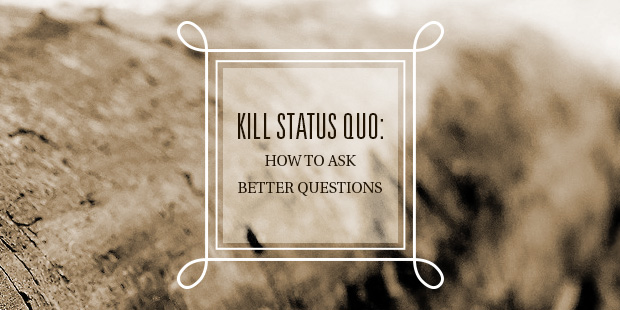
Does Your Church Possess the Right Skills to Take on Tomorrow?
Over a decade and a half into the 21st century, one thing has become clear: change is the new normal.
In business, it’s called innovation, and it’s a strategic pillar in nearly every organization. Thanks to a growing body of research and thought leadership in recent years, we’re learning a great deal about the individual skill sets behind innovation, and the organizational strategies that create disruptive growth. Yet in organizations around the world, well-intentioned innovation initiatives crash and burn, despite a wealth of great ideas, copious research, and well-designed strategies.
Why? Innovation is not just about data analysis, plans and processes, and thinking outside the box. More than anything else, innovation is about change. And the truth is that as much as we’d like to think otherwise, we are all hardwired to resist it.
Your “innovation initiatives” are no exception to this rule. People are tired of being asked to change and innovate. It’s become a dirty word inside organizations, because it usually heralds one more complicated system to learn, or more things to add to the daily to-do list. Call a big meeting to kick off another “change initiative” and just about the whole team will roll their eyes.
They know that next year more changes will be implemented, because the last change initiative didn’t change a thing for the better, or the execs that start the initiative won’t be there in a year, and the next leadership team will roll out yet another initiative.
That cycle stops here. Despite the grumbling, eye rolling, and resistance, change is an absolute imperative for organizations today. Innovation is not only about finding new growth opportunities and improving the bottom line. It’s about developing services, solutions, and ideas that improve people’s lives, and the world in which we live. This is what the greatest organizations – and individuals -strive to achieve.
So, what can we do to make change stick?
Lisa Bodell, founder and CEO of futurethink, an internationally recognized innovation research and training firm, believes that anyone can be innovative, and everyone can become an agent for change. Futurethink helps organizations—from Fortune 500 companies to boutique firms—create environments where innovation and change thrive naturally. Working with these companies has given futurethink a chance to experiment with ideas about what it takes to build innovation capabilities in organizations, and then test-drive specific tools and exercises to make it happen.
According to Bodell, one of the things that she’s learned along the way is that when it comes to change, an organization’s biggest enemy is itself.
Before you jump in and start trying to shake things up, it’s helpful to gauge how open to change you—your organization, your team, or you as an individual—are today.
- Is your culture as a whole stifling innovation, or will just a small tweak here and there get your cylinders firing wildly again?
- Does your organization possess the right skills to take on tomorrow?
- Does it embrace the behaviors necessary to create a culture that incubates innovation and generates growth over the long term?
- What skills and behaviors do you already possess and where can you improve?
You can take stock of your innovation situation by taking the futurethink Innovation Capabilities Diagnostic, available in the download below.
This Innovation Diagnostic will help you get a feel for how fertile the ground is for innovation in your organization. With a general idea of where your organization could improve, you’re well on your way to examining the many ways you can begin to inspire innovation at your organization, and ensure that – this time – the changes will stick.
>> Download How to Make Change Stick by Lisa Bodell here.
Would you like to learn more about developing an intentional strategy to help your organization deal with change? Connect with an Auxano Navigator and start a conversation with our team.

Tags: Change, Innovation, Leadership Engine, Lisa Bodell, Making Change Stick














